
[San Bushman Carrying His Two Kids]
The Bushmen are the remnants of Africa's oldest cultural group, genetically the closest surviving people to the original Homo sapiens core from which the Negroid people of Africa emerged. Bushmen are small in stature generally with light yellowish skin, which wrinkles very early in life. Bushmen traditionally lived in Southern Africa in the following countries, although virtually none live purely by hunting and gathering today: Botswana, Namibia, South Africa, Zambia, Zimbabwe and Angola, with loosely related groups in Tanzania.

[San Father Hugging His Children]
Recorded history also placed them in Lesotho and Mozambique. Rock art and archaeological evidence can place them as far north as Libya, Egypt, Sudan and Ethiopia, with the evidence of legend & racial type suggesting some traces remain.

[San Old Man]
Bushmen is an Anglicization of boesman, the Dutch and Afrikaner name for them; saan (plural) or saa (singular) is the Nama word for bush dweller(s), and the Nama name is now generally favoured by anthropologists. Each of these terms has a problematic history, as they have been used by outsiders to refer to them, often with pejorative connotations. The individual groups identify by names such as Ju/'hoansi and ! Kung (the punctuation characters representing different click consonants), and most call themselves by the pejorative "Bushmen" when referring to themselves collectively.

[San Kids With Facial Painting]
The term San was historically applied by their ethnic relatives and historic rivals, the Khoikhoi. This term means "outsider" in the Nama language and was derogatory because it distinguished the Bushmen from what the Khoikhoi called themselves, namely the "First People". Western anthropologists adopted San extensively in the 1970s, where it remains preferred in academic circles. The term Bushmen is widely used, but opinions vary on whether it is appropriate because it is sometimes viewed as pejorative.

[The Bushmen Tribe of Tsumkwe]
San History
The San are said to be descendants of Early Stone Age ancestors. They are nomadic group living in temporary shelters, caves or under rocky overhangs. With the arrival of the first Europeans settlers in 1652 in Southern Africa sparked clashes as they sought new territory they exterminated the Sans whom they deemed to be inferior like wild animals. They called them "Bushmen" and proceeded to wipe out 200,000 of them in 200 years. They also sold them in slave markets and to traveling circuses.

[San Man]
According to Dr Ben Smith, genetic evidence suggests they are one of the oldest, if not the oldest, peoples in the world, going back to perhaps 60,000 years. They have genetic traces that no one else in the world has, that put them at the root of the human tree - we are related to them, but they are not as closely related to us. They were in South Africa thousands of years before, the iron age Bantu people arrived with their superior technology.

[San Bushmen, The World Oldest People]
The San have a rich oral history and have passed stories down from generation to generation. The oldest rock paintings they created are in Namibia and have been radiocarbon-dated to be 26 000 years old. The San rock art gives us clues about their social and belief systems.
One of the most significant pieces of Rock art found in South Africa was found on Linton Farm in the Eastern Cape. The panel was removed from the farm in 1917 and taken to the South African Museum in Cape Town. It is known as the Linton panel, and an image from this panel was used in the new South African Coat of Arms.
Eighty-three years in museum care, protected from the elements, has made the Linton panel one of the best preserved of all pieces of South African rock art. In 1995, the panel featured as one of the premiere attractions in the international exhibition, "Africa: the Art of a Continent".

[San Man With His Arch, San People Are Expert Archers]
The figure embodies the spirit of the African Renaissance. When European nations began their Renaissance, they turned to the classical age of Greece and Rome when art and architecture had reached its zenith. San rock art is one of the great archaeological wonders of the world, and is a mirror which reflects the glories of the African past.

[San Women Of Ghanzi In Botswana]
Language
San languages, characterised by implosive consonants or 'clicks', belonged to a totally different language family from those of the Bantu speakers. Broadly speaking, they are two different and identifiable languages, namely the Khoikhoi and San. Many dialects have evolved from these, including /Xam, N¡, !Xu, Khwe and Khomani. Nà má, previously called Hottentot, is the most populous and widespread of the Khoikhoi and San languages.

[Ju/hoansi San People Making Arrows]
The San bushmen major language groups include !Kung, Khomani, Vasekela, Mbarakwena, /Auni, Auen, /Gwi, //Ganaa, Kua, / Tannekwe, /Geinin, /Xoma, // Obanen Ganin, /Xam-ka!ke and ! Xo.
Very little is known about the different dialects of South Africa's San people, as most of these beautiful, ancient languages were never recorded. Fortunately, the / Xam dialect, which is spoken by the San, was recorded almost in its entirety, thanks to the work of a German linguist, Dr WHI Bleek.

[San Woman Holding Her Beautiful Baby Boy]
/Xam speakers originally occupied a large part of western South Africa, but by 1850, only a few hundred /Xam speakers lived in remote parts of the Northern Cape. Today, the language is no longer exists, but survives in 12 000 pages of hand-written testimony taken down word-for- word from some of the last /Xam speakers in the 1860s and 1870s. These pages record not just the / Xam language, but also their myths, beliefs and rituals. A comprehensive /Xam dictionary was produced by Dr Bleek at the time, but was only published years later (DF Bleek: 1956).

[San Woman With Her Baby]
woman with her baby South Africa's motto, written on the SA coat of arms is a /Xam phrase: !ke e: /xarra //ke, literally meaning: diverse people unite. Economy and Socio-Political Structure Bushmen were hunter/gatherers, with traditionally about 70/80% of their diet consisting of plant food, including berries, nuts, roots and melons gathered primarily by the women. The remaining 20/30% was meat (mostly antelopes), hunted by the men using poisoned arrows and spears on hunts that could last several days. They made their own temporary homes from wood that they gathered. Their hunting & gathering economy and social structure had remained virtually unchanged for tens of thousands of years until very recently, a socio-economic culture that has sustained mankind universally during their evolution until the advent of agriculture. The Bushmen did not farm or keep livestock, having no concept of the ownership of land or animal.

[Beautiful San Girls]
Their social structure is not tribal because they have no paramount leader and their ties of kinship are fairly relaxed. They are a loosely knit family culture where decisions are made by universal discussion and agreement by consensus. An individual's opinion is naturally weighted according to their level of skill and experience in the particular field of discussion. Families within a clan would speak a common language but neighboring clans would usually speak a different tongue, although there would normally be a fair degree of similarity & understanding between them. Apart from family relations, bearing the same name (out of only about 35 names per gender) would also foster a name kinship.Bushmen are generally nomadic within fairly limited boundaries, governed by the proximity of other families and clans. As a very loose guideline, the territory of a family may stretch to a 25-mile circle. Obviously, if there are no other bordering clans or other people these areas may stretch further, as far as is needed to ensure adequate food and water sources.
The roles of men & women were very distinct and rarely overlapped, which is a characteristic almost universal amongst hunter/gatherers the world over. It based on survival needs encouraging the most efficient utilisation of available skills and resources. Despite what is often perceived as a very sexist society, the importance of women is very high within the group and their opinions often take precedence, particularly where food is concerned.

[San (Bushmen) Of Kalahari Desert]
Traditionally, bushman women spent 3-4 days a week gathering veldkost (wild plants), often going out in groups to search for edible or medicinal plants. Furthermore, before the advent of trade with Bantu or white settlers, all tools, construction material, weapons or clothes were made of plants or animal products. About 400-500 local plants and their uses were known to bushmen, along with the places where they grew not only providing a balanced nutrition, but also moisture from roots even in time of drought.
Plants were used in ways similar to western phytomedicine to treat wounds and heal illnesses; other plants where rather part of healing ceremonies in which a healer would burn plants to make rain, trance to heal an ailment, or perform a charm to bring fertility. The range of ailments treated included wounds including snake bites, colds, stomach ache, tooth ache or headache, or diarrhea but also infections like malaria, tuberculosis, or syphilis. One bushman plant, Hoodia gordonii, even made the worldwide news since it was patented by a pharma company as a diet support due to its traditional bushman usage to suppress appetite and hunger a law case against bio piracy ensued, with the parties settling to royalties being paid to bushmen organisations.

[Bushmen (San) Tribe, Tsumkwe, Namibia Having Their Meal By The Fireside]
The bushmens diet and relaxed lifestyle have prevented most of the stress-related diseases of the western world. Bushmen health, in general, is not good though: 50% of children die before the age of 15; 20% die within their first year (mostly of gastrointestinal infections). Average life expectancy is about 45-50 years; respiratory infections and malaria are the major reasons for death in adults. Only 10% become older than 60 years.
Birth, Death, Marriage and initiation Amongst the Bushman or San, birth is not generally a big issue. They don't really prepare and or go to a hospital like modern man. It is claimed that a Bushman women who is about to give birth will simply go behind a bush and "squeeze out" the baby.
There is also some claims that they prepare a medicine from devils claw (Harpagophytum spp.), have the baby, and is back in her daily routine within a hour. In reality she is likely to take her mom or an elder aunt along, for comfort and help. The book "Shadow Bird" by Willemien le Roux, describes a Bushman birth with complications, and the old woman that was called to help, so it doesn't always go as easy as it is supposed to.

[Naro Bushman Child, Central Kalahari In Botswana]
After the birth a Bushman child will receive much love and attention from his parents and other adults and even older children. Their love of children, both their own and that of other people, is one of the most noticeable things about the Bushman.
If a child is born under very severe drought conditions, when the fertility of the Bushman women are in any case low, perhaps to prevent such an occurrence. The mother will quietly relieve the just born baby of severe and certain future suffering by ending its life. This is most likely to happen in lean years, if she is still suckling another child and will obviously not be able to feed both of the children.
This is accepted behaviour, and born out of necessity and not malice or any other consideration. It stems from the simple realiy of live in a harsh climate, and the realisation that the life of the child that a lot has already been invested in, and that might be put at risk by tender feelings for a new-born that are in any case likely to die soon, are not likely to have a good outcome.
 Death is a very natural thing to the Bushmen as shown by the following lines from a Bushman song, quoted by Coral Fourie in her book "Living Legends of a dying culture". "The day we die a soft breeze will wipe out our footprints in the sand. When the wind dies down, who will tell the timelessness that once we walked this way in the dawn of time"
Death is a very natural thing to the Bushmen as shown by the following lines from a Bushman song, quoted by Coral Fourie in her book "Living Legends of a dying culture". "The day we die a soft breeze will wipe out our footprints in the sand. When the wind dies down, who will tell the timelessness that once we walked this way in the dawn of time" If some-ones dies at a specific camp, the clan will move away and never camp at that spot again. Bushmen will never knowingly cross the place where some-one has been buried. If they have to pass near such a place, they will throw a pebble on the grave and mutter under their breath, to the spirits to ensure good luck. They never step on a grave and believe that the spirit remains active on that spot above ground, and they don't want to offend it.
Among most Bushmen, a wedding is a private event between the Bridegroom and the Bride. Only in exceptional cases may a guest be invited, but there is no celebration or other ritual as we understand it, only a private "ceremony" or agreement between the two people involved.
 The Bushmen don't have initiation ceremonies. There is some dancing and cleansing ceremony after a maiden has shed her first menstrual blood. Boys are not considered men until they have killed their first large and dangerous animal. Thereafter they are are treated as full members of the clan or tribe.
The Bushmen don't have initiation ceremonies. There is some dancing and cleansing ceremony after a maiden has shed her first menstrual blood. Boys are not considered men until they have killed their first large and dangerous animal. Thereafter they are are treated as full members of the clan or tribe.Religion
Most Kalahari Bushmen believe in a "Greater" and a "Lesser" Supreme being or God. There are other supernatural beings as well, and the spirits of the dead. The "God" or supreme being first created himself, then the land and its food, the water and air. He is generally a good power, that protects and wards of disease and teaches people skills. However, when he is angered, he can send bad fortune. The greater god, depending on his manifestation, is called different names by the same people at different times, and also have different names among the different language groups.

[San Old Woman And Her Grandchild]
The lesser god is regarded as bad or/and evil, a black magician, a destroyer rather than builder, and a bearer of bad luck and disease. Just like the "supreme being" he is called by various names. They believe bad luck and disease is caused by the spirits of the dead, because they want to bring the living to the same place they are. Similar to the black people in South Africa, the Bushman have a strong believe that the ancestral spirits play an important role in the fate of the living, but they don't use the same rituals to appease them.
Cagn/Kaggen is the name the Bushmen gave their god; the first sociologists translated this as Mantis, maybe wrongly. This god being nothing else than the unseen presence of nature and everything that surrounded them. They also prayed to the moon and the stars but they could never explain exactly why they did this. Cagn/ Kaggen was seen as human like and also had magical powers and charms.
 The Bushmen's beliefs go beyond that. The eland is their most spiritual animal and appears in four rituals: boys' first kill, girls' puberty, marriage and trance dance.
The Bushmen's beliefs go beyond that. The eland is their most spiritual animal and appears in four rituals: boys' first kill, girls' puberty, marriage and trance dance.A ritual is held where the boy is told how to track an eland and how the eland will fall once shot with an arrow.
He becomes an adult when he kills his first large antelope, preferably an eland. The eland is skinned and the fat from the elands' throat and collar bone is made into a broth, This broth has great potency.
 In the girls' puberty rituals, a young girl is isolated in her hut at her first menstruation. The women of the tribe perform the Eland Bull Dance where they imitate the mating behaviour of the eland cows. A man will play the part of the eland bull, usually with horns on his head.
In the girls' puberty rituals, a young girl is isolated in her hut at her first menstruation. The women of the tribe perform the Eland Bull Dance where they imitate the mating behaviour of the eland cows. A man will play the part of the eland bull, usually with horns on his head.This ritual will keep the girl beautiful, free from hunger and thirst and peaceful.

[San Maidens]
As part of the marriage ritual, the man gives the fat from the elands' heart to the girls' parents. At a later stage the girl is anointed with eland fat.
In the trance dance, the eland is considered the most potent of all animals, and the shamans aspire to possess eland potency. The Bushmen believed that the eland was /Kaggen's favourite animal.
 The modern Bushmen of the Kalahari believe in two gods: one who lives in the east and one from the west. Like the southern Bushmen they believe in spirits of the dead, but not as part of ancestor worship. The spirits are only vaguely identified and are thought to bring sickness and death.
The modern Bushmen of the Kalahari believe in two gods: one who lives in the east and one from the west. Like the southern Bushmen they believe in spirits of the dead, but not as part of ancestor worship. The spirits are only vaguely identified and are thought to bring sickness and death.'Medicine People' or shamans protect everyone from these spirits and sickness. A shaman is someone who enters a trance in order to heal people, protect them from evil spirits and sickness, foretell the future, control the weather, ensure good hunting and generally try to look after the well being of their group.
 Healing
HealingStudies have shown that the Bushmen have many strategies for dealing with ill health.
The women are experts at harvesting and preparing medicinal plants for the treatment of a wide range of ailments. Blood letting and scarification may also serve as a medicinal function. The best-known Bushmen medical practice is the healing dance. This is when the healers or shamans enter a trance by way of rhythmic clapping and stamping of the dancers feet.
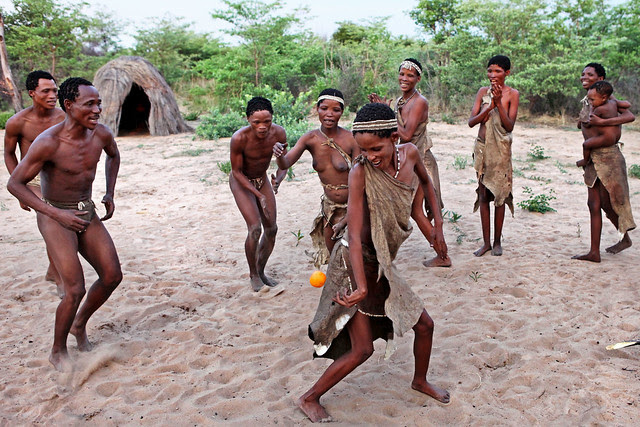 A shaman or medicine person is someone who enters a trance in order to heal people, foretell the future, control the weather, ensure good hunting and so forth.
A shaman or medicine person is someone who enters a trance in order to heal people, foretell the future, control the weather, ensure good hunting and so forth.The Bushmen have many shamans. They are ordinary people who perform everyday tasks and are not a privileged class.
The shamans sometimes exercise their supernatural powers in the dream world, but principally it's practiced at a trance dance.
At a trance dance the women sit around a central fire and clap the rhythm of songs.
The men will dance around the women. With the sounds of the dancing rattles and thudding steps combined with the women's songs they activate a supernatural potency that resides in the songs and in the shaman themselves. When the potency 'boils' and rises up the shamans' spine, they enter a trance.
The shamans rely on hyperventilation, intense concentration and highly rhythmic dancing to alter their state consciousness. Inexperienced shaman can fall to the ground unconscious if they can't control their level of concentration.
When entering a trance, shamans often bleed from their nose and experience excruciating physical pain. The shamans' arms stretch behind them as the transformation into the spirit world takes place.

During the trance the shamans perform their tasks, the most important is to cure people of any ailments. They lay their trembling hands on these people and draw sickness from them into their own bodies. Then, with a high pitched shriek, they expel the sickness through a 'hole' in the nape of the neck, the n//au spot. The sickness thus returns to its source, which is thought to be unidentified wicked shamans.
The next day, fully recovered, the shaman will tell people of his experiences with the spiritual world. It is from these experiences that the Bushmen painted the rock art and more recently on canvas.

Today about half of the men and a third of the women in the Kalahari are said to be shamans. Most young men strive to become shamans, not for personal gain, but to serve their community in that capacity. In their late teens they will ask an experienced shaman to teach them. The apprenticeship may last some years, during which the novice will dance with the older man, absorbing his potency.

San Trance Dance
A trance dance occurs not only for the healing of the sick but also serves as a social and sacred function. A fire is lit where a group, mostly women sit in a circle around it. The dancers, mostly men, will start dancing in a circle around these women. They will have rattles on their legs made from dried seed pods. The group sitting around the fire will sing, clap and tend to the fire while the dancers are trying to enter a trance.
 The first few hours of a trance dance are relaxed and sociable. Then, when the first person shows signs of entering a trance, the clapping and singing gets more intense. This could be when they start to sweat profusely, begin to breath heavily and have glossy stares.
The first few hours of a trance dance are relaxed and sociable. Then, when the first person shows signs of entering a trance, the clapping and singing gets more intense. This could be when they start to sweat profusely, begin to breath heavily and have glossy stares.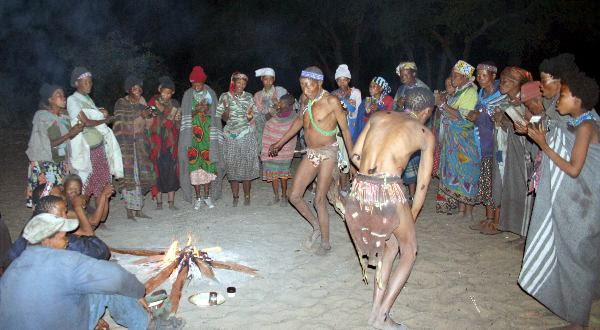
Traditional healing dance not only curing illness, but also a means of relieving any existing social tensions. The dancers will soon begin to enter a trance. From here they will be able to start healing the people. A normal dance will last about 6 hours but occasionally.
The Sans rock art is one of the greatest in the world. The San/ bushmen paintings are one of Southern Africa's greatest cultural treasures. Subjects of the bushmen/san paintings range from animals (mainly eland) to humans, therianthropes to ox-wagons and mounted men with rifles.

When Europeans first encountered rock art of the San people, or Bushmen, in southern Africa some 350 years ago, they considered it primitive and crude. They were just Bushman paintings, two- dimensional accounts of hunting and fighting and daily life. Twentieth-century scholars had much more respect for the aesthetics of the paintingsoften finely detailed and exquisitely colored but many also viewed them largely as narrative accounts of hunter-gatherer life In terms of archaeology we have a seemless stone tool tradition, and a seemless art tradition, going back 27,000 years with the 'Apollo 11' stones - indeed, the San have longest continuing art tradition in the world.
 The general features of southern African San art are explained in terms of concepts that pervade the cognitive systems of San people from all areas. Amongst all San groups the most important ritual is the Great Dance. In this dance, through trance, the San say that they harness a kind of spiritual power that is like electricity. In a Bushmen society, shamanism is practised at a trance dance.The visions that are seen by the shamans in a trance, is where they get their inspiration to paint.
The general features of southern African San art are explained in terms of concepts that pervade the cognitive systems of San people from all areas. Amongst all San groups the most important ritual is the Great Dance. In this dance, through trance, the San say that they harness a kind of spiritual power that is like electricity. In a Bushmen society, shamanism is practised at a trance dance.The visions that are seen by the shamans in a trance, is where they get their inspiration to paint.
Because so many of the paintings depict trance visions, many researchers believe that all the artists were shamans. It seems impossible that shamans made the paintings and engravings while they were in a trance. It is more probable that they remembered or experienced after-images and then depicted these experiences. It is also entirely possible that anybody familiar with the mythology about the spirit world and beliefs about the healing ritual, and who possessed artistic skill and imagination, may have been an artist.

Around these fragments of the dance are placed animals, but not just a random selection of animals. Those animals that have special supernatural potency are the ones particularly chosen and repeated often. It is from these animals that the San say they draw power in the dance and the rock art sometimes shows this. Lines of power connect animals to dancers in the art. More than this, dancers are regularly depicted taking on features of powerful animals such as their hooves or heads.

The art also shows the magical other-worldly things such as rain- animals (above left), monsters and spirit people that are encountered by dancers on their out-of-body vision journeys. We thus understand San art as a deeply spiritual art, one that harnesses and shares with others the power of successive generations of San spiritual experience and enlightenment.

By linking specific San beliefs to recurrent features in the art, researchers have been able to crack many of the codes of San rock art. Unfortunately there are no recorded interviews with the painters themselves, in order to shed light on the paintings. However, in the late nineteenth century a Bushman named Qing guided Joseph Millerd Orpen, a magistrate from the Cape colony, through the Drakensberg.

On their journey, Qing and Orpen came across many magnificent paintings in rock shelters. Orpen was so impressed that he copied several of them. He then sent these to a magazine editor in Cape town, who showed them to a Dr Wilhelm Bleek. Bleek was a German linguist who was living in Cape Town. He was studying the language of the /Xam people - a San group from the Northern Cape - at this time. When Bleek showed Orpen s drawing of the strange looking animal to the group of / Xam San he was interviewing, they immediately saw in it 'the rain animal', and proceeded to explain its spiritual and religious significance. It was this historical explanation that began the decoding of the paintings.
 It was then the work of Professor David Lewis-Williams, the South African scholar and professor of archaeology at the University of the Witwatersrand in Johannesburg, South Africa, threw more light on the paintings. The 'Rosetta Stone' of this rock art is located at the Game Pass Shelter in the Drakensberg Mountains. "One day, I was looking at a picture in which there was a dying eland and a man apparently holding its tail. The man had hooves, like the eland; his hair was standing out, like the eland's hair; his legs were crossed, in imitation of the eland's legs," he explained.
It was then the work of Professor David Lewis-Williams, the South African scholar and professor of archaeology at the University of the Witwatersrand in Johannesburg, South Africa, threw more light on the paintings. The 'Rosetta Stone' of this rock art is located at the Game Pass Shelter in the Drakensberg Mountains. "One day, I was looking at a picture in which there was a dying eland and a man apparently holding its tail. The man had hooves, like the eland; his hair was standing out, like the eland's hair; his legs were crossed, in imitation of the eland's legs," he explained.
Trance is so overwhelming that it is difficult to describe. To explain it and to help people who were not shamans to see what they had been through, the painters of rock art images looked for comparative experiences. Crossing over to the spirit world during trance could be compared to 'death'. This did not mean that they actually died, but that they believed that while they were in trance, their spirits would leave their bodies and meet others in the spirit world. 'Death' is used as a metaphor for the trance state. Trance is very much like death. Sometimes it is called 'half-death'.
 Professor Lewis-Williams explained how all this suddenly made sense to him: "I saw that the dying eland was a metaphor for the dying medicine man. Shamans are said to die when they enter the spirit world through trance. And sthe dying eland is a source of potency (spiritual power)."
Professor Lewis-Williams explained how all this suddenly made sense to him: "I saw that the dying eland was a metaphor for the dying medicine man. Shamans are said to die when they enter the spirit world through trance. And sthe dying eland is a source of potency (spiritual power)." To show their experiences, the artists also used visual metaphors such as showing shamans 'underwater' and 'dead'. These capture aspects of how it feels to be in trance. The artists also show their actions in the spirit world, such as their capturing of the rain animal, their activation of potency for use in healing or in fighting off enemies or other dangerous forces. But, the art was far from just a record of spirit journeys. Powerful substances such as eland blood were put into the paints so to make each image a reservoir of potency. As each generation of artists painted or engraved layer by layer of art on the rock surfaces their expansion created potent spiritual places.
To show their experiences, the artists also used visual metaphors such as showing shamans 'underwater' and 'dead'. These capture aspects of how it feels to be in trance. The artists also show their actions in the spirit world, such as their capturing of the rain animal, their activation of potency for use in healing or in fighting off enemies or other dangerous forces. But, the art was far from just a record of spirit journeys. Powerful substances such as eland blood were put into the paints so to make each image a reservoir of potency. As each generation of artists painted or engraved layer by layer of art on the rock surfaces their expansion created potent spiritual places.


[San Bushmen Art Rocks]

[San (Bushmen) father and his baby]
What problems do bushmen face today The Bushmen had their homelands invaded by cattle herding Bantu tribes from around 1,500 years ago, and by white colonists over the last few hundred years. From that time they faced discrimination, eviction from their ancestral lands, murder and oppression amounting to a massive though unspoken genocide, which reduced them in numbers from several million to 100,000. Today, although all suffer from a perception that their lifestyle is 'primitive' and that they need to be made to live like the majority cattle-herding tribes, specific problems vary according to where they live.
 In South Africa, for example, the ! Khomani now have most of their land rights recognised, but many other Bushman tribes have no land rights at all.
In South Africa, for example, the ! Khomani now have most of their land rights recognised, but many other Bushman tribes have no land rights at all.Situation in Namibia A fairly large community of bushmen, the Ju/'hoansi, today live on both sides of the border between Namibia and Botswana, named Bushmanland. This group has been studied, filmed and assisted by Western scholars since 1951.

The academic studies continue to this day and they are under the general guidance of the "Ju/wa Bushman Development Foundation" which is essentially a group of concerned individuals and academia. In 1991, with the formation of the "Nyae Nyae Farmers Cooperative" and with representation and guidance from the "Ju/wa Bushman Development Foundation", they managed to secure land rights within Bushmanland.
They are still permitted to hunt within the boundaries, despite being a game conservation area, as long as they use traditional methods. It means no firearms, dogs, vehicles or horses, rules that are occasionally broken and usually results in a prison term for the offenders.
One of the biggest problems is alcoholism, brought about mainly by military stationed in the local town of Tsumkwe bringing alcohol into the region despite a government ban on bringing in spirits. Having virtually no tolerance of alcohol, there was a massive increase in drunkenness, alcoholism and crime with a general decline in family structures and community well- being.
Situation in Botswana Central Kalahari Bushmen The Gana (G//ana) and Gwi (G/wi) tribes in Botswana's Central Kalahari Game Reserve are among the most persecuted. Far from recognising their ownership rights over the land they have lived on for thousands of years, the Botswana government has in fact forced almost all of them off it. In the early 1980s, diamonds were discovered in the reserve. Soon after, government ministers went into the reserve to tell the Bushmen living there that they would have to leave because of the diamond finds.
In three big clearances, in 1997, 2002 and 2005, virtually all the Bushmen were forced out. Their homes were dismantled, their school and health post were closed, their water supply was destroyed and the people were threatened and trucked away. Almost all were forced out by these tactics, but a large number have since returned, with many more desperate to do so. They now live in resettlement camps outside the reserve. Rarely able to hunt, and arrested and beaten when they do, they are dependent on government handouts. They are now gripped by alcoholism, boredom, depression, and illnesses such as TB and HIV/AIDS.

Although the Bushmen won the right in court to go back to their lands in 2006, the government has done everything it can to make their return impossible. Since then the government has arrested more than 50 Bushmen for hunting to feed their families, and banned the Bushmen from using their water borehole. Hundreds still languish in resettlement camps, unable or scared to return home. Unless they can return to their ancestral lands, their unique societies and way of life will be destroyed, and many of them will die.

Botswana - Ghanzi Bushmen Bushmen around the town of Ghanzi had served as cattle herders to Afrikaans farmers since early 20th century. They worked in largely unfenced ranges. There were still some benefits for the Bushmen as game was still fairly abundant, while getting the spin- off benefits of some milk, some money and even the occasional cow that died naturally.

All this changed significantly, courtesy of the European Common Market, who in their wisdom offered a very high price for Botswana's beef as long as they instituted major disease control measures to eliminate foot & mouth, anthrax and a few other endemic ailments. This resulted in an extensive game control fencing operation to separate the cattle from the disease ridden wildlife?. Unfenced ranges with moderate levels of wildlife became fenced in lands with a catastrophic drop in game numbers due to a cut of the herds migration routes to cope with drought.

The Common Market (later the European Economic Community) were happy and paid the massively inflated prices, while subsistence game hunting became meaningless. The cattle monoculture further destroyed the bushmens plant resources, severely impacting their traditional hunter and gatherer lifestyle.
South Africa - Khomani Bushmen These Bushmen from the Kalahari Gemsbok National Park (now the Kgalagadi Transfrontier Park) region were ejected from the Reserve between 1931, upon its formation, & 1973 when the last were finally evicted. They had initially during this period been allowed limited assess and work within the reserve but were finally removed by the management.
Despite many attempts to get access to their traditional hunting areas, entry was denied on the basis that they would become a problem begging from tourists. This was despite the valid argument that the large southwestern region requested was off limits to visitors to the reserve and therefore should not present any difficulties. They remained a small impoverished group largely integrating themselves within the mixed coloured communities that developed along the fringes of the Reserve, working where possible for local farmers.

A group of bushmen still partially adhering to their traditional life and family structure, under their leader Dawid Kruiper were finally successful in 1999 when 40 000 hectares of land next to the Kgalagadi Park was purchased by the government from local farmers and given back to the Khomani community. In 2001 it was agreed that an additional 25 000 hectares of the Kalahari Gemsbok park was to be returned to them for managed utilisation but not for residence.

Tension between the traditional and westernised bushmen led to various power struggles, but some of the bushmen continue to occasionally hunt and gather. Furthermore, the community- owned !Xaus luxury lodge recently opened in the Southwestern-most part of Kgalagadi Park.

San folklore Creation of the first Bushmen As the Bushmen lived in a very dry area, water to them have a very magical power that could revive them. In the legend of creation Mantis appears and the entire world is still covered by water. A bee (a symbol of wisdom) carries Mantis over the turbulent waters of the ocean. The bee however, became very tired and flew lower and lower. He searched for solid land to make his decent to but he only grew more and more tired. But then he saw a flower drifting on the water. He laid Mantis down in the flower and within in him the seed of the first human. The bee drowned but when the sun came up Mantis awoke and from the seed the bee had left the first human was born.

Mantis and his family The bushmen don't regard the Mantis as god but rather a superbeing. They are not the only civilization who has this belief and other African tribes do see it as a God. Even the Greeks believed it had divine and magical powers. Mantis is a Greek word meaning divine, or soothsayer. All over the world many legends is told about this magical creature. To the Bushmen however he is a "dream Bushman". He is very human. Many paintings of the bushmen figure a Bushman with the head of a Mantis.
 Mantis also has a big family. His wife is Dassie (rock hyrax). His son is also a Mantis and he also has an adopted daughter, Porcupine. Her real father is the evil monster called the All-Devourer who she is too afraid of. Porcupine is married to a creature that is part of the rainbow, called Kwammanga. They have two sons, Mongoose or Ichneumon and then Kwammanga, after his dad. Mantis also has a sister, Blue Crane that he loves very much.
Mantis also has a big family. His wife is Dassie (rock hyrax). His son is also a Mantis and he also has an adopted daughter, Porcupine. Her real father is the evil monster called the All-Devourer who she is too afraid of. Porcupine is married to a creature that is part of the rainbow, called Kwammanga. They have two sons, Mongoose or Ichneumon and then Kwammanga, after his dad. Mantis also has a sister, Blue Crane that he loves very much.The Baboons At a time long ago the baboons were little people like the Bushmen, but they were very mischievous. They loved making trouble. On a day Cagn sent his con Cogaz to go and look for sticks they could use in making bows. When the little people saw him they started dancing around the boy shouting: "Your father thinks he is clever and wants to make bows to kill us, now we will kill you!" They did as they said and Cogaz's body was hung in a tree. The little people danced again and sang: "Cagn thinks he is clever!"
Then Cagn awoke from his sleep. He had a feeling that something was wrong so he asked hi wife Coti to bring him his charms. He thought and thought. Then it came to him. He realized what the little people did to his son. He immediately went in search of his son. When the little people saw him coming they started singing an other song. A little girl sitting nearby told Cagn that they were singing something else before he came. He ordered them to sing what the girl heard before. When he heard this he ordered them to stay where they are until he returns. He returned with a basket full of pegs. As they danced he drove a peg in each of their backsides. They fled to the mountains because they now had tails and they started living with animals. Cagn then climbed into the tree and used his magic to resurrect his son.
 How Mantis stole fire from Ostrich Mantis also gave the Bushmen fire. Before this people ate their food like all the other predators, raw. They also had no light at night and were surrounded by darkness. Mantis noticed that Ostrich's food always smelt very good and decided to observe what he did to his food. As he crept close one day he saw Ostrich take some fire from beneath his wing and dip his food in it. After eating he would tuck back the fire under his wing.
How Mantis stole fire from Ostrich Mantis also gave the Bushmen fire. Before this people ate their food like all the other predators, raw. They also had no light at night and were surrounded by darkness. Mantis noticed that Ostrich's food always smelt very good and decided to observe what he did to his food. As he crept close one day he saw Ostrich take some fire from beneath his wing and dip his food in it. After eating he would tuck back the fire under his wing. Mantis knew Ostrich would not give him the fire so he planned a trick on Ostrich to steal the fire from him. One day he called Ostrich and showed him a tree carrying delicious plums. As Ostrich started to eat Mantis shouted at him that the best ones were at that top. Ostrich jumped higher and higher and as soon as he opened his wings Mantis stole the fire from him and ran off. Ostrich was very ashamed of this and since that day kept his wings pressed to his sides and will never fly.
Mantis knew Ostrich would not give him the fire so he planned a trick on Ostrich to steal the fire from him. One day he called Ostrich and showed him a tree carrying delicious plums. As Ostrich started to eat Mantis shouted at him that the best ones were at that top. Ostrich jumped higher and higher and as soon as he opened his wings Mantis stole the fire from him and ran off. Ostrich was very ashamed of this and since that day kept his wings pressed to his sides and will never fly.
The Rainbow Rain was once a beautiful woman who lived in the sky. She wore a rainbow around her waist and she was married to the creator of the earth. They had three daughters. When the eldest daughter grew up she asked her mother to go down to earth. Her mother gave her permission but as soon as se went down she got married to a hunter. While she was gone Rain had another child. This time a boy which she called Son-eib. When he was old enough his sisters asked Rain if they could all go down to see the world. In fear of losing them all Rain didn't want them to go. But then a friend Wolf who liked the two daughters said he would accompany them down and look after them. The father believed this wicked beast and gave his permission.

As soon as they got to earth they went to a village. A woman in the village saw Son-eib and he looked very familiar to her. She offered them food and Wolf accepted this. They all ate of this food except Son-eib as Wolf told everybody that he is not a person but merely a thing. Son-eib turned away and went to sit in the grass, all by himself. While sitting there he caught a little red bird. He concealed it under his coat. That night the woman offered them shelter in her house. But once again Wolf did not allow the boy to sleep inside the house and said that Son-eib should sleep in the small hut outside. While everybody was sleeping Wolf went and fetched all the bad people in the village. They set fire to the hut killing poor Son-eib.

However, the little bird managed to escape. It flew up into the sky and went straight to Rain, the boy's mother.As soon as it arrived it told Rain of what has happened. Rain told her husband and they were furious. A little while later the people of the village saw a great storm approaching them fast and around its waist was a rainbow. Lightning started to flash striking all around them. Only Wolf and his fellow bad people were hit and killed. Then a mighty voice came from the sky with the words: "Don't kill the children of the sky!" Ever since this all Bushmen are afraid of the rainbow. When the bushmen see a rainbow they would hit on sticks and shout for it to go away!

The sun, moon and the stars One of the stories of the sun says that he is a man from whose armpits shine the rays of light. He did not want to share his light with all the people so he stayed in his hut. The first Busman ordered hi children to throw him into the sky. They threw him up and this is where he still shines from today. In the night he is very cold so he draws his blanket over him. This blanket is very old and has lots of little holes in it. This is the stars we see at night.Another tale tells of a young woman who waits for the hunters to return every night. When it grows dark she throws up a handful of white ash. This becomes the Milky-way that guide the hunters home. The moon is believed to be the old shoe of Mantis. He placed it in the air to guide him at night. The sun is very jealous of the moon when it is at its full brightness. The sun uses its sharp rays to cut of pieces of the moon bit by bit until there is almost nothing left of the moon. The moon begs the sun to stop and then he always goes away. Soon after the moon starts growing again until it is full and the whole process repeats itself.
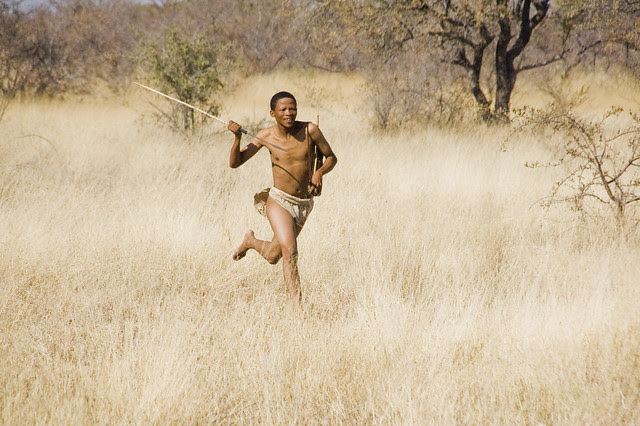
The San are excellent hunters . Although they do a fair amount of trapping, the best method of hunting is with bow and arrow. The San arrow does not kill the animal straight away. It is the deadly poison, which eventually causes the death. In the case of small antelope such as Duiker or Steenbok, a couple of hours may elapse before death. For larger antelope, this could be 7 to 12 hours. For large game, such as Giraffe it could take as long as 3 days.

Today the San make the poison from the larvae of a small beetle but will also use poison from plants, such as the euphorbia, and snake venom. A caterpillar, reddish yellow in colour and about three-quarters of an inch long, called ka or ngwa is also used. The poison is boiled repeatedly until it looks like red currant jelly. It is then allowed to cool and ready to be smeared on the arrows. The poison is highly toxic and is greatly feared by the San themselves; the arrow points are therefore reversed so that the poison is safely contained within the reed collar. It is also never smeared on the point but just below it - thus preventing fatal accidents. The poison is neuro toxic and does not contaminate the whole animal. The spot where the arrow strikes is cut out and thrown away, but the rest of the meat is fit to eat. The effect of the poison is not instantaneous, and the hunters frequently have to track the animal for a few days . The San also dug pitfalls near the larger rivers where the game came to drink. The pitfalls were large and deep, narrowing like a funnel towards the bottom, in the centre of which was planted a sharp stake. These pitfalls were cleverly covered with branches, which resulted in the animals walking over the pit and falling onto the stake. When catching small animals such as hares, guinea fowls, Steenbok or Duiker, traps made of twisted gut or fibre from plants were used. These had a running noose that strangled the animal when it stepped into the snare to collect the food that had been placed inside it. Another way of capturing animals was to wait at Aardvark holes. Aardvark holes are used by small buck as a resting place to escape the midday sun.

The hunter waited patiently behind the hole until the animal left. When this happened, it was be firmly pinned and hit on the head with a Kerrie (club). The San are intelligent trackers and know the habits of their prey. On discovering where a herd has gathered, they immediately test the direction and force of the wind by throwing a handful of dust into the air. If the ground is bare and open, he will crawl on his belly, sometimes holding a small bush in front of him. Hunters carry a skin bag slung around one shoulder, containing personal belongings, poison, medicine, flywhisks and additional arrows.
They may also carry a club to throw at and stun small game, a long probing stick to extract hares from their burrows or a stick to dig out Aardvark or Warthog. Hunting is a team effort and the man whose arrow killed the animal has the right to distribute the meat to the tribe members and visitors who, after hearing about the kill, would arrive soon afterwards to share in the feast. According to San tradition, they were welcome to share the meal and would, in the future, have to respond in the same way. However, plant foods, gathered by the womenfolk, are not shared but eaten by the woman?s immediate family. The San make use of over 100 edible species of plant.

Source: http://www.kalahari- meerkats.com/fileadmin/files/ guides/Bushmen_light.pdf
The people, who have lived as hunter-gatherers for thousands of years, are the direct relations of early modern humans who migrated from the continent to spread their DNA throughout the world.
A study by the University of Pennsylvania has found all populations descended from just 14 ancient African populations.

Researchers discovered the genetic DNA of The San people was more diverse than any other group, suggesting they have survived longer than any other group.
The first humans evolved in southern Africa, probably near the South Africa-Namibia border, and today the continent has more genetic variation than anywhere else on Earth.
Nearly three-fourths of African- Americans can trace their ancestry to West Africa, according to the analysis published in the online edition of the journal Science.
It is the largest study of African genetics ever undertaken. Over 10 years, Sarah Tishkoff, a geneticist at the University of Pennsylvania and an international team of researchers trekked across Africa collecting samples to compare the genes of various peoples.
"Given the fact that modern humans arose in Africa, they have had time to accumulate dramatic changes in their genes," said lead researcher.

"Everybody's history is part of African history because everybody came out of Africa," said Muntaser Ibrahim of the department of molecular biology at the University of Khartoum, Sudan.
http:// www.telegraph.co.uk/ news/5255229/Most-ancient- race.html

Meet the ancestors: DNA study pinpoints Namibia as home to the world's most ancient race
UPDATED: 15:38 GMT, 1 May 2009 Scientists have long known that humans originated in Africa, but now a groundbreaking DNA study has revealed our 'Garden of Eden' is likely to be on the South African-Namibian border. For it is the San people, hunter-gatherers in this area for thousands of years, who researchers now believe are the oldest human population on Earth. They are descended from the earliest human ancestors from which all other groups of Africans stem and, in turn, to the people who left the continent to populate other corners of the planet.


The research published today in the online journal Science also showed that nearly three-quarters of African-Americans can trace their ancestry to West Africa. The 10-year-study was led by Professor Sarah Tishkoff, a geneticist at the University of Pennsylvania.

The San people live on the Namibia- Angola border June 04, 2013 SAN (BUSHMEN)
The tests revealed they had all descended from just 14 ancestral populations, and the languages they spokes were closely correlated with the variation of their genes. The study also suggests that a small group of 150 Africans, who went on to populate the rest of the world, first left their continent from the Red Sea. The researchers found people who lived in Sudan had genetic markers which suggested they were related to the group who moved abroad 50,000 years ago. 'The human genome describes the complexity of our species,' added Muntaser Ibrahim of the department of molecular biology at the University of Khartoum, Sudan.

Scott M. Williams of Vanderbilt University noted that constructing patterns of disease variations can help determine which genes predispose a group to a particular illness. This study 'provides a critical piece in the puzzle', he said. For example, there are clear differences in prevalence of diseases such as hypertension and prostate cancer across populations, Mr Williams said.

Christopher Ehret from the University of California, Los Angeles, compared genetic variation among people to variations in language. There are an estimated 2,000 distinct language groups in Africa broken into a few broad categories, often but not always following gene flow. Movement of a language usually involves arrival of new people, Mr Ehret noted, bringing along their genes.

But sometimes language is brought by a small 'but advantaged' group which can impose their language without significant gene flow.


The study also found that about 71 per cent of African-Americans can trace their ancestry to western African origins. They also have between 13 per cent and 15 per cent European ancestry and a smaller amount of other African origins. There was 'very little' evidence for American Indian genes among African- Americans, Tishkoff said.
HOODIA Frequently asked questions Is hoodia a drug? Hoodia is not a drug. Hoodia is the natural world famous appetite suppressant now widely used in the US and around the world. What is Hoodia Gordonii and Is it New ? Hoodia Gordonii is actually a succulent and technically different from a cactus, it is also know by the name "Xhoba". Hoodia is not really new, it has been used by the indigenous tribal people in Southern Africa ( SA, Namibia, Botswana) as a natural appetite suppressant and thirst quencher during long hunting trips for generations. Hoodia Gordonii is its Latin botanical name. The plant grows wild in the harsh conditions of the Kalahari desert of Southern Africa.
Does Hoodia really work? The rediscovered extract from this African succulent has been tested in clinical trials and discovered on obese subjects to reduce caloric intake by 40% to 50%. Meaningful weight loss will result from such a drop in daily caloric intake. Hoodia Gordonii contains a unique molecule that works as a natural appetite suppressant. Taking Hoodia Gordonii when you are hungry can alleviate the feeling of hunger and so make you less likely to snack between meals due to hunger. When taking Hoodia Gordonii before a meal, even a small meal can leave you feeling more satisfied, which encourages you to eat smaller meals. Hoodia can take away your craving for food instantly.

It is also important to note that whilst our hoodia capsules will significantly reduce your appetite, they are NOT a meal replacement and should not be used as such. Research shows that eating little and often is a far more effective way to lose weight than missing meals. How does it work? The chemical constituents in Hoodia Gordonii work within the satiety center by releasing a chemical compound similar to glucose but much stronger. The hypothalamus receives this signal as an indication that enough food has been consumed and this in turn reduce the appetite.
How can I be sure there is Hoodia in your pills? All Hoodia we sell is certified and have the correct cites certification to assure the raw material is pure Southern African Hoodia Gordonii Do you use pure hoodia ? Yes, our hoodia capsules are absolutely free of any type of stimulants, additives or fillers.

Is there a right time to take Hoodia ? Hoodia Gordonii does not make you drowsy or keep you awake. General advice suggests that you take one capsule approximately one hour before your meal. How much Hoodia Gordonii should I take ? Each capsule contains 650mg (equals 13000 PE20:1) - Take 1 capsule 1 hour before breakfast, lunch & dinner for a total of 1,950mg per day (39000 PE20:1).

Typically for adults, take 1 capsule up to three times a day Is Hoodia safe to use? Yes! our Hoodia is completely free of dangerous stimulants as well as additives and fillers, Hoodia is a 100% natural with no addition of synthetic substances. It is also suitable for vegetarians and vegans. Do not use with any other appetite suppressant. For best results combine with a healthly lifestyle. Consult your nutritionist for a balanced weight loss program. Consult a doctor before use if you are under medical supervision. Pregnant or lactating women should consult a doctor before using any product.

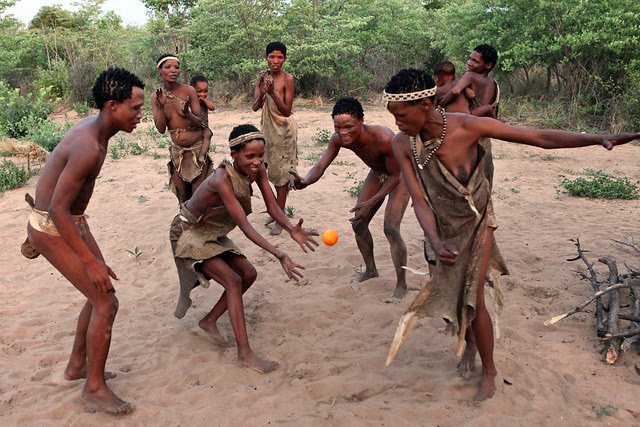








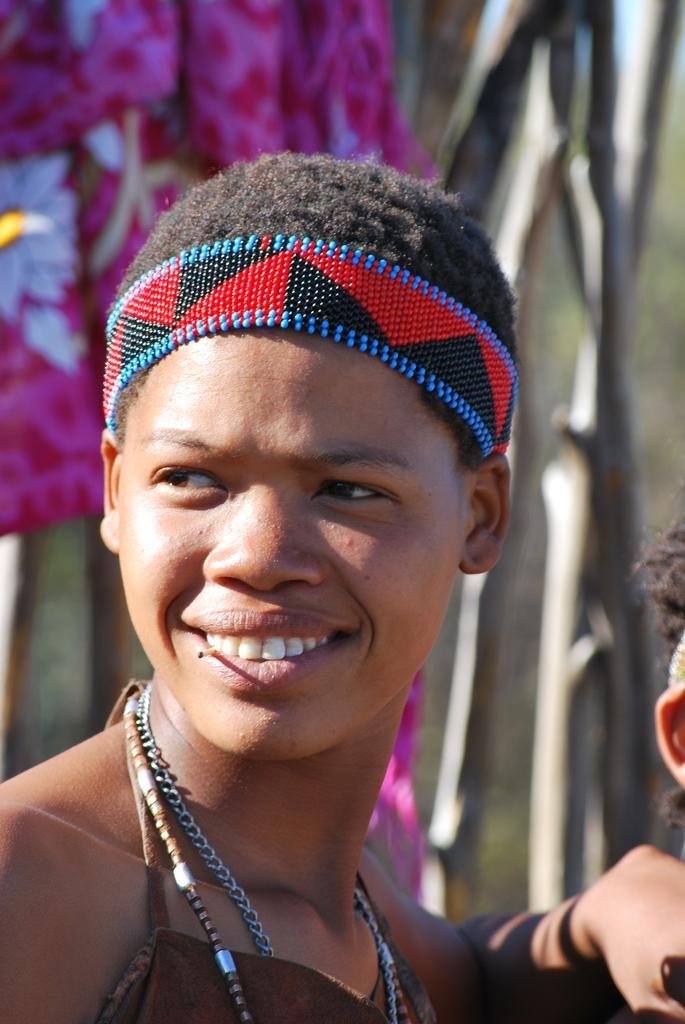

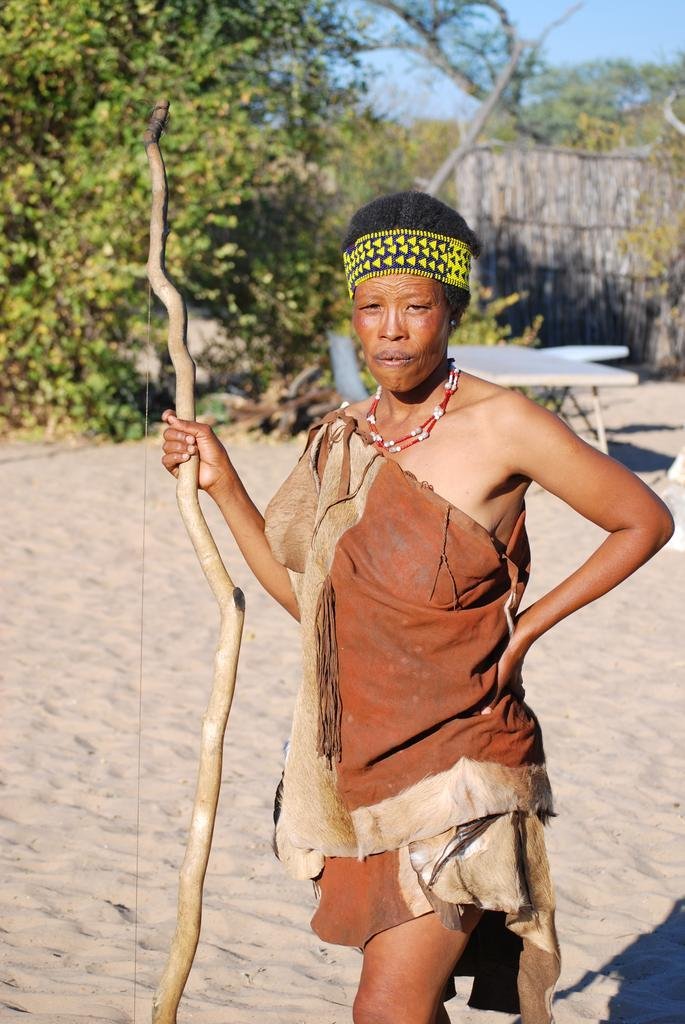









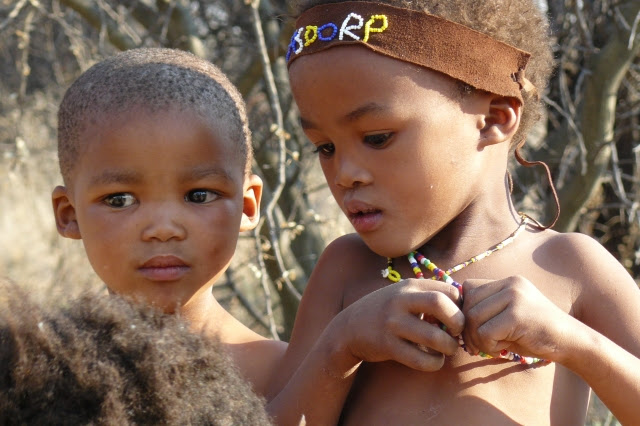


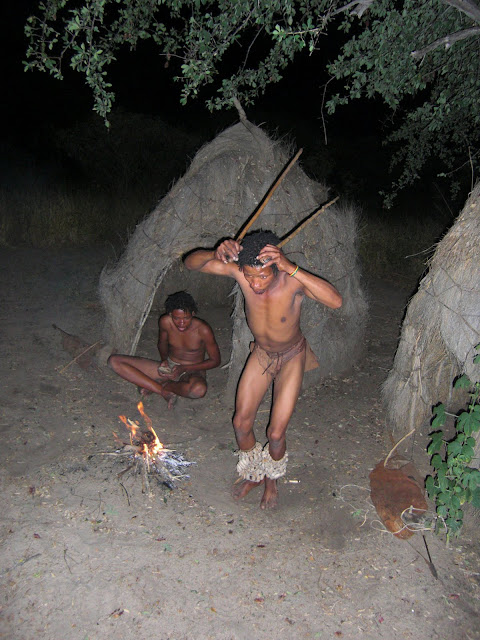
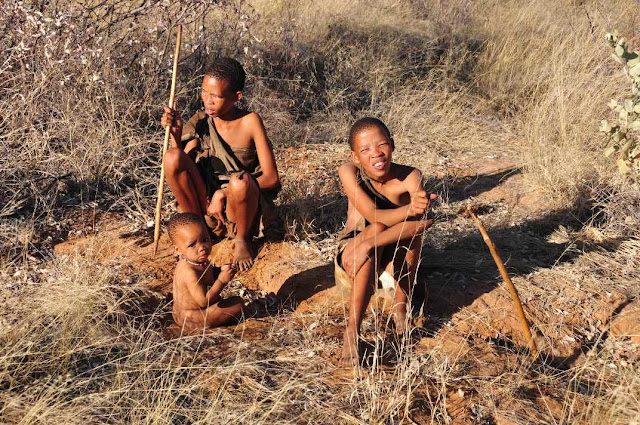

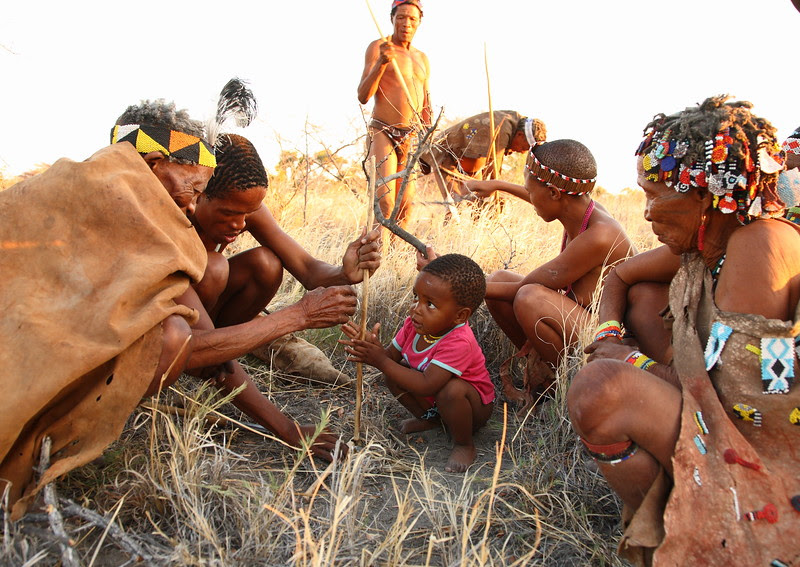






























.JPG)


.





1. If you find a warthog hole in the morning, do not stand in front of it. Knowing that lions have a habit of waiting outside for their morning debut, warthogs back into their holes at night. In the morning the hogs shoot like cannon balls out of their dens, breaking the legs of anyone unlucky enough to stand in the way.
2. If you surprise a leopard, do not make eye contact. It will pounce on your back for the offense. Pretend not to notice, look away and slowly move out of the area.
3. If an elephant gets a whiff of you and is feeling grumpy, he will charge or mock- charge and you must make a quick determination of his intentions. If it is a mock-charge, the animal will raise its head and flap its ears as it moves toward you. If this is the case, slowly back away. But if the elephant trumpets, lowers its head, tucks its trunk between its legs and flattens its ears, it is a real charge and you will be lashed with the trunk, gored with a tusk and stomped into chutney.
4. If an African buffalo charges, there is nothing to do but run. Old male buffalo get tired of roaming with the herd and live a sedentary and solitary retirement. If disturbed, the old male will either flee or charge. If he charges, run and climb a tree, but be sure to climb the side of the tree opposite the charging beast, since he may not stop but slam full steam into the tree. 5. If you need to improve your scent, the San people, aka Kalahari bushmen, recommend wild basil as an excellent perfume.
6. If you love a girl, go directly to her and tell her how you feel. She will say come back tomorrow. When you return the next day, she may say, ?I forgot about it? and tell you to come back again tomorrow. This may go on for months, if she is too shy to tell you how she feels. You may need to send an emissary to get an answer.
7. If you urinate and it?s too hot (a sign of STD) use the wild asparagus plant, called Mabele, translated from Setswana as ?tits of the goat? because of its utter like shape. Dig the root of the male plant, which is thinner and longer then the female. Chop and boil while fresh. Mix with the bark of the jackalberry tree or the feverberry tree and add wild sage. Boil together and drink for three days.
8. If you have an infected wound, use the buffalo thorn (Ziziphus Mucronata) to heal it. First, choose a leaf the size of the wound and place it over the sore. Leave it on over night. In the morning there will be a little hole. Squeeze the wound to remove the infection. Boil the root of the same tree and drink half a cup of the tea once a day, until the infection is gone.
9. If you have the flu with a fever, collect cough grass with roots attached, the leaves of the rain tree and broad leafed ?Tappington? grass. Take the tops off the grass and boil all three in a big pot for one hour. Pour the hot liquid into a metal basin and breath the vapors, using a blanket to create a tent to capture the steam. Repeat once a day until the fever is broken and the sinuses are clear.
10. If you get lost in the daytime, look in palm trees for the nest of the Red Billed Buffalo Weaver, who always build on the west side of the tree. You can also take a census of termite mounds, whose tips most often lean to the northwest. Termites work only at night raising the mound with spit and sand. The sun, which travels across the northern sky in the southern hemisphere, dries the new construction more quickly on the sun-facing side bending the nest.
11. If you are caught in a lightning storm, find shelter under an umbrella thorn or the African mangosteen (Garcinia Livingstonei).
12. If you are hungry for antelope meat, dig a hole 3 meters wide and 3 meters deep. Collect branches of silver cluster, sharpen into stakes, harden in fire, dry in sand and sharpen. Line the pit with the stakes facing upwards and cover the pit with twigs and grass. Sit by the hole downwind from the prey. When the prey is on the upwind side of the trap, walk around behind them and run toward the hole.
13. If you hear the Black Plover at night, there may be predatory cats in the area. The Black Plover has only three toes and can not hold a branch, so it must nest on the ground. Baboons also give helpful warnings of predators. A ?hoo? indicates the presence of humans, a cough warns of a cat and a high pitched squeak chased by a bark is a sign of a snake.
14. If you hear the Fork-tailed Drongo before sunrise, the time is 4 am. By 5:30 am the coucals start with a sound like water coming from the bottle, ?glug, glug. glug?. After that it?s the fish eagles by 6 am.
15. If a bird craps on you, it?s good luck. So be happy.











0 Comments:
Post a Comment